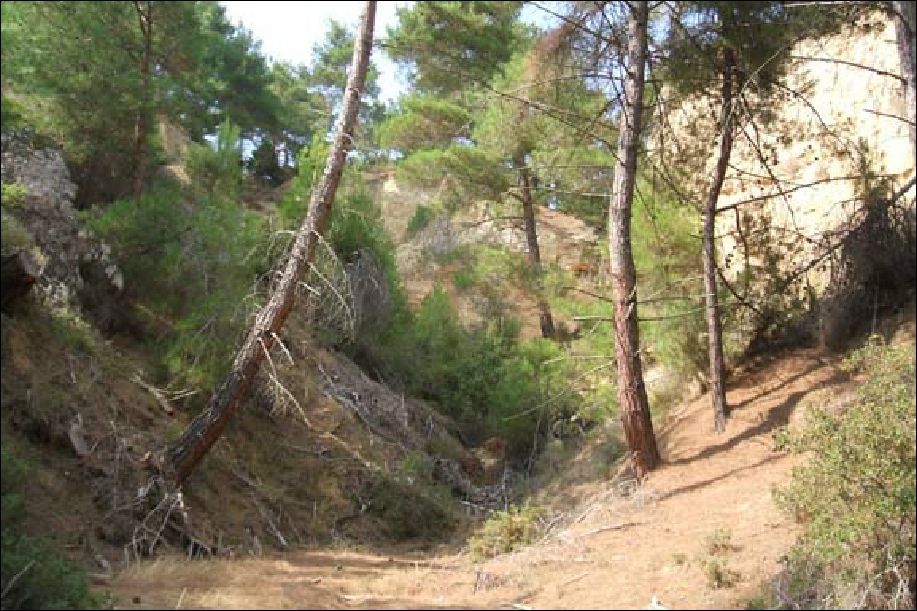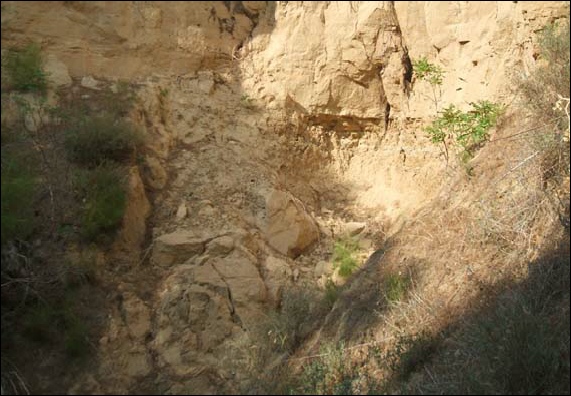Aberdeen Gully
Aberdeen Gully

After the detour on to Gully Spur, this page resumes progress up the gully and towards the front line and the village of Alcitepe.
A few hundred metres north of Artillery Row, the land on the left of the gully opens into an area now overgrown with bushes and small trees and carpeted with pine needles. This is Aberdeen Gully, named after the 89th/Field Dressing Station which was based there. Such is the returned growth here that it is easy at a first glance to assume that this is small glade with little to see. In fact, the offshoot area runs back a long way. Penetrate further beyond the obscuring trees and you will be rewarded by a well-
‘It is about 500 yards from the firing line in a little gully called Aberdeen Gully (as the 89th come from there), which runs off from the big gully. A narrow path about 50 yards long has been formed by a stream, now dry. The path runs up into a little natural amphitheatre in the cliff, about 15 yards in diameter. The sides of the gully are almost precipitous, but it has been widened enough in places to make a dressing-
///october.unplayable.speedboats
 The photo left, taken in September 2008, shows Creighton’s amphitheatre at the rear of Aberdeen Gully. the distinctive cut into the rocks on the centre-
The photo left, taken in September 2008, shows Creighton’s amphitheatre at the rear of Aberdeen Gully. the distinctive cut into the rocks on the centre-
Aberdeen Gully was quite typical of the many offshoots from Gully Ravine. As well as field-
in 2015 I visited Aberdeen Gully again and was astonished to see the changes that have taken place. Storms have sent torrents of water pouring down from the higher land on Gully Spur, and the little amphitheatre used by Creighton looks quite different now. The bowl shape is beginning to erode and it will undoubtedly collapse completely in the near future.
 From:
From: